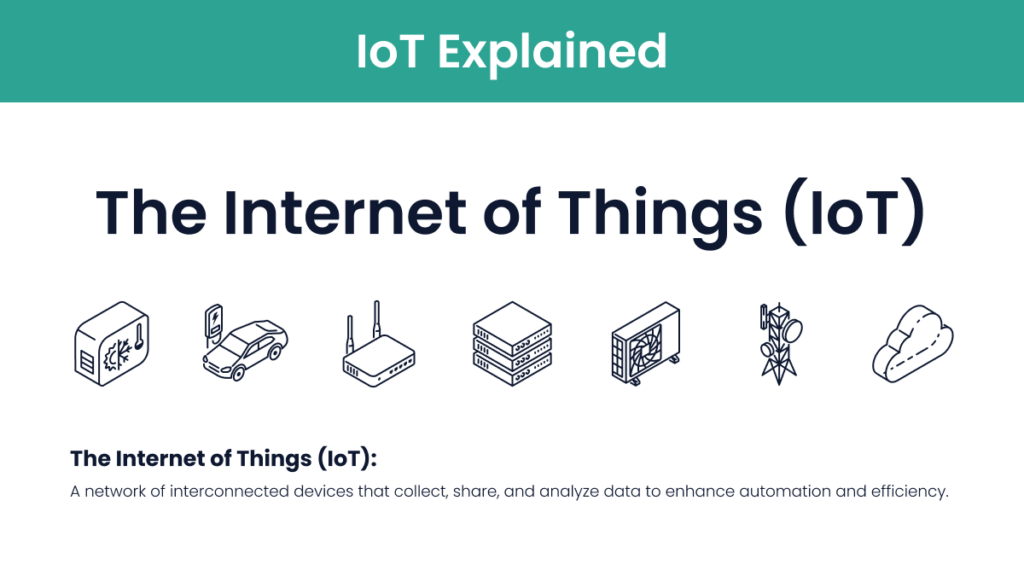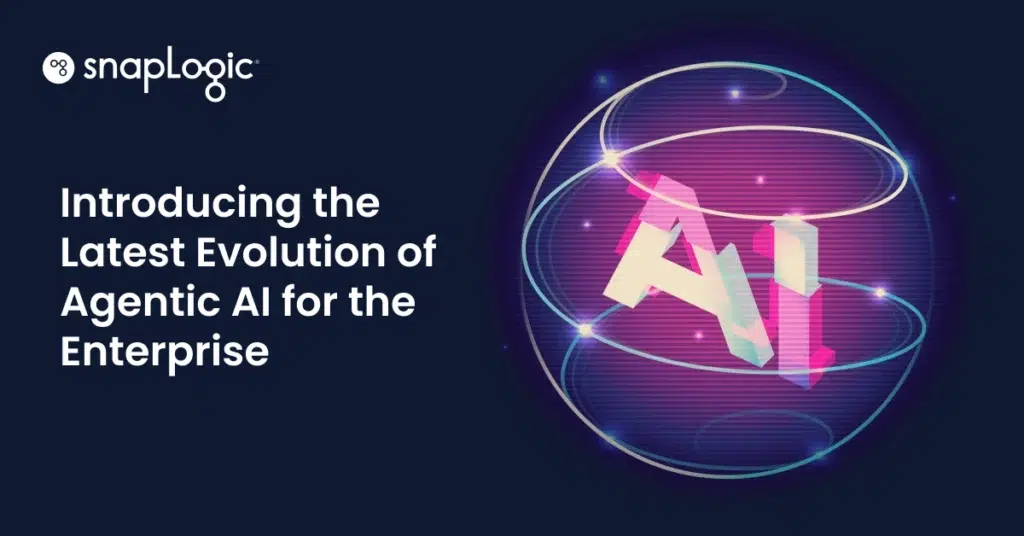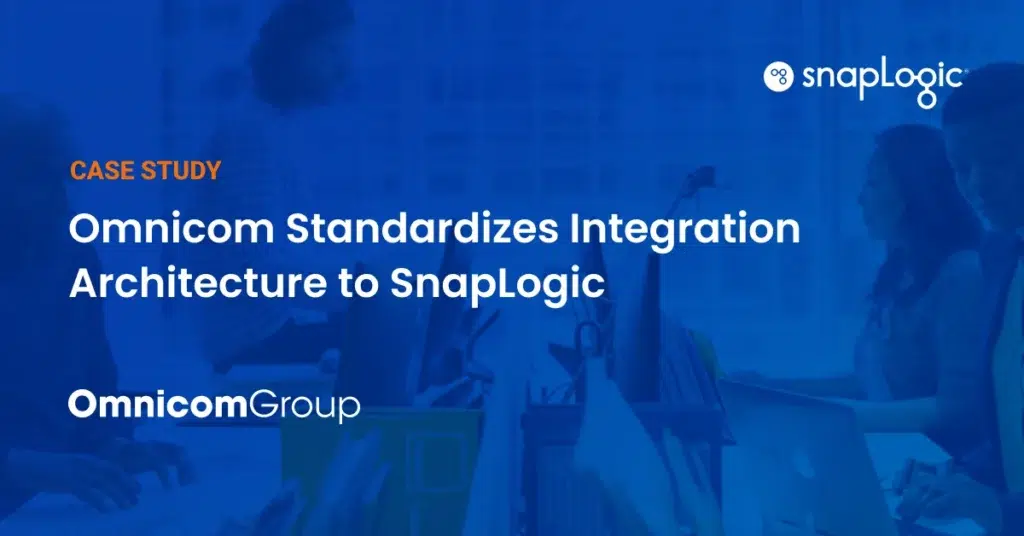What is the Internet of Things (IoT)?
The Internet of Things (IoT) is a network of interconnected physical devices embedded with sensors and software that collect and exchange data over the Internet to enhance automation and efficiency in various applications.
The expansive ecosystem of IoT
The Internet of Things (IoT) is a vast ecosystem of interconnected devices that communicate and exchange data over an IoT network. These physical devices, embedded with IoT sensors and software, enable seamless data transfer and analysis without human intervention. This connectivity drives numerous IoT solutions, enhancing efficiency and customer experience in various sectors. The IoT spans consumer applications, such as smart thermostats and smartwatches, to industrial IoT (IIoT) deployments, transforming the physical world into a dynamic digital environment.

How does IoT work?
IoT works by integrating smart devices into an IoT platform where they collect, transmit, and analyze real-time data. These connected devices use low-power connectivity solutions like Wi-Fi and Bluetooth to communicate. IoT technology encompasses several components: sensors for data collection, connectivity for data transfer, and cloud computing for data processing. IoT apps provide user interfaces for monitoring and device management. Advanced IoT solutions leverage AI and machine learning to derive insights from big data, enabling predictive maintenance and automation in sectors like automotive and supply chain management.
The history of IoT
The concept of IoT dates back to the early ideas of connected machines in the 1980s. The term “Internet of Things” was coined by Kevin Ashton in 1999. Early developments in RFID technology and the rise of internet connectivity in the 2000s set the stage for IoT’s growth. The advent of cloud computing, affordable IoT sensors, and widespread mobile internet access further propelled IoT technology, leading to sophisticated use cases in Industry 4.0 and enterprise IoT, transforming traditional business models and operations.
What technologies have made IoT possible?
Several key technologies underpin IoT:
- Sensors and Actuators: Enable physical devices to detect changes and perform actions.
- Connectivity: Includes Wi-Fi, Bluetooth, and cellular networks for data transmission.
- Cloud Computing: Facilitates storage, processing, and analysis of IoT data.
- Edge Computing: Processes data closer to the source, reducing latency.
- AI and Machine Learning: Enhance data analysis and automation.
- IoT Security: Protects data and devices from cyber threats.
- Digital Twins: Create virtual models of physical objects for analysis and optimization.
What are the risks and challenges of IoT?
IoT faces several challenges:
- Security: IoT security is critical as connected devices are vulnerable to cyberattacks, leading to potential breaches and data theft.
- Privacy: The vast amount of IoT data collected raises concerns about user privacy.
- Interoperability: Ensuring seamless communication among diverse IoT devices and platforms is challenging.
- Scalability: Managing extensive IoT deployments requires robust infrastructure.
- Data Management: Efficiently handling and analyzing massive volumes of IoT data is complex.
- Vulnerabilities: IoT systems must address potential weaknesses in security systems to prevent exploitation.
Why is IoT important?
- Efficiency and Automation: Reduces downtime and enhances productivity in manufacturing through IIoT.
- Customer Experience: Improves service delivery and personalization in consumer apps and smart devices.
- Real-time Data: Enables real-time decision-making and predictive analytics.
- Sustainability: Promotes energy efficiency and resource management in smart cities.
- Innovative Business Models: Drives new business opportunities and revenue streams.
- Enhanced Security Systems: Improves safety and surveillance through connected security systems.
Examples of IoT in action include Amazon’s smart home devices, Microsoft’s enterprise IoT solutions, and real-world implementations in the automotive and robotics sectors. These technologies are revolutionizing how we interact with the digital and physical worlds, highlighting the importance of IoT in driving future innovation and economic growth.
IoT is transformative, offering numerous benefits of IoT across industries:
The synergy of Artificial Intelligence, GenAI, and IoT
Artificial Intelligence (AI) significantly enhances the capabilities of the Internet of Things (IoT). AI empowers IoT devices to make intelligent decisions, predict maintenance needs, and optimize operations without human intervention. Generative AI (GenAI) takes this further by creating advanced predictive models and personalized experiences, driving smarter IoT solutions.
Generative Integration combines GenAI and IoT to generate new solutions and improve real-time data processing. This reduces downtime and enhances customer experiences across various sectors, from smart cities to healthcare.
The future of IoT lies in Generative Integration. It enables continuous innovation, efficiency, and responsiveness in IoT ecosystems, paving the way for more advanced and adaptive technologies.
Real-world examples of AI and IoT
Artificial Intelligence (AI) and the Internet of Things (IoT) are transforming various industries with innovative applications.
In smart cities, AI-powered IoT systems manage traffic flow, reduce congestion, and optimize energy consumption. For instance, AI algorithms analyze data from IoT sensors to control traffic lights, reducing wait times and improving fuel efficiency.
In healthcare, AI enhances IoT-based health monitoring devices. Wearable devices like smartwatches track vital signs in real-time, alerting users and healthcare providers to potential health issues before they become critical. This enables proactive health management and reduces hospital readmissions.
In manufacturing, AI-driven predictive maintenance uses IoT sensors to monitor equipment performance. AI analyzes the data to predict failures and schedule maintenance, minimizing downtime and improving operational efficiency. This is particularly impactful in Industry 4.0 environments, where automation and real-time data are crucial.
In agriculture, AI and IoT combine to optimize farming practices. IoT sensors in fields monitor soil moisture, temperature, and crop health. AI analyzes this data to recommend irrigation schedules and pest control measures, enhancing yield and sustainability.
These real-world examples demonstrate how AI and IoT work together to create smarter, more efficient systems across various sectors, driving innovation and improving quality of life.









